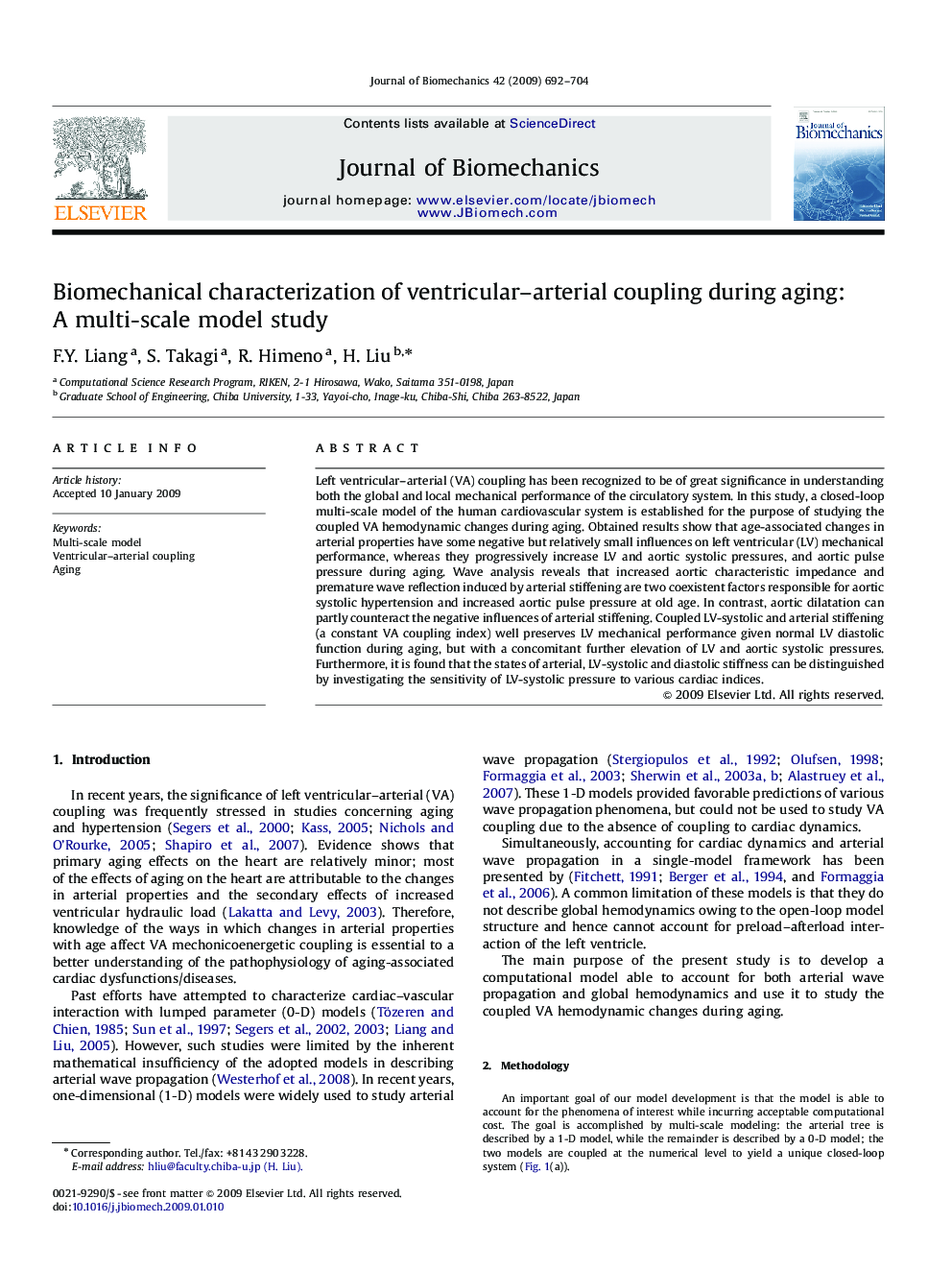| Article ID | Journal | Published Year | Pages | File Type |
|---|---|---|---|---|
| 872926 | Journal of Biomechanics | 2009 | 13 Pages |
Left ventricular–arterial (VA) coupling has been recognized to be of great significance in understanding both the global and local mechanical performance of the circulatory system. In this study, a closed-loop multi-scale model of the human cardiovascular system is established for the purpose of studying the coupled VA hemodynamic changes during aging. Obtained results show that age-associated changes in arterial properties have some negative but relatively small influences on left ventricular (LV) mechanical performance, whereas they progressively increase LV and aortic systolic pressures, and aortic pulse pressure during aging. Wave analysis reveals that increased aortic characteristic impedance and premature wave reflection induced by arterial stiffening are two coexistent factors responsible for aortic systolic hypertension and increased aortic pulse pressure at old age. In contrast, aortic dilatation can partly counteract the negative influences of arterial stiffening. Coupled LV-systolic and arterial stiffening (a constant VA coupling index) well preserves LV mechanical performance given normal LV diastolic function during aging, but with a concomitant further elevation of LV and aortic systolic pressures. Furthermore, it is found that the states of arterial, LV-systolic and diastolic stiffness can be distinguished by investigating the sensitivity of LV-systolic pressure to various cardiac indices.
